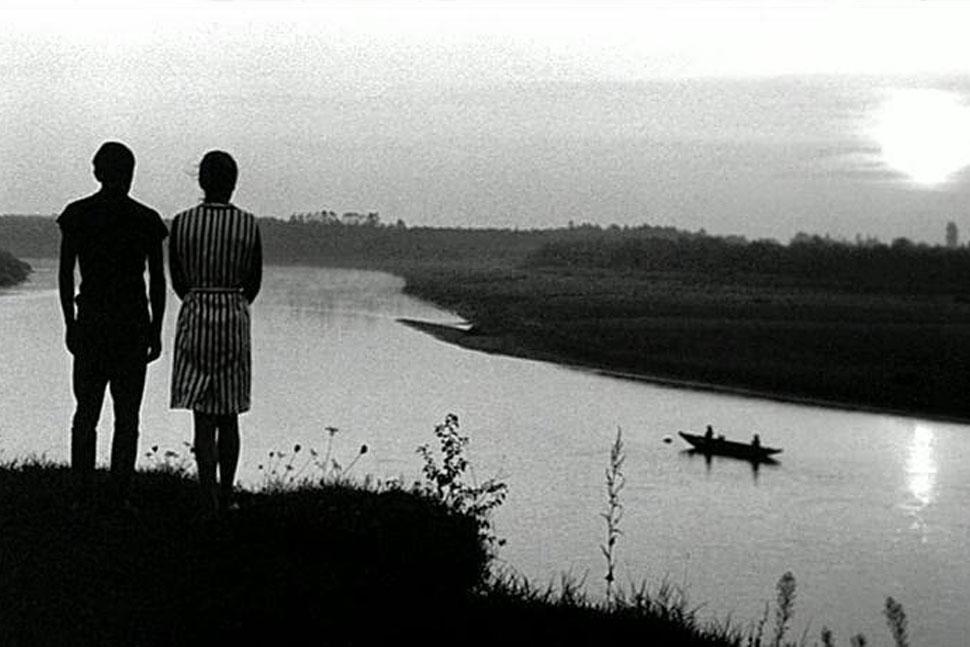| Director: | István Gaál |
|---|---|
| Production: | Hunnia Filmstúdió |
| Running Time: | 81’ |
| Language: | Hungarian |
| Country: | Hungary |
| Year: | 1964 |
| Main Cast: | Andrea Drahota, Marianna Moór, Istvánné Zsipi |
| Screenplay: | István Gaál |
| Editor: | István Gaál |
| Production Designer: | József Romvári |
| Costume Designer: | Zsuzsa Vincze |
| Music: | András Szőllősy, Antonio Vivaldi, Girolamo Frescobaldi |
| Sound: | Tibor Rajky |
| Restoration: | Hungarian National Film Fund – Film Archive |
Sodrásban (Current)

Synopsis
A group of students are enjoying a day out at the river Tisza. Carefree sunbathing, several join in diving for mud on the river bed. Nobody notices that somebody is missing. Gabi has drowned. In the wake of the tragedy, they are forced to examine their own consciences: who is to blame, what is their attitude to each other and to the world. This pressure matures them into adults and changes their relationships, too.
István Gaál’s first feature film became one of the first international hits of the Hungarian New Wave. Even this early in their careers, Gaál and his fellow cinematographer Sára had discovered the picturesque visuality built on the alternation of landscapes and human portraits, where the geometrically photographed landscape and objects become almost musical mirrors of the soul. Pier Paolo Pasolini praised the film’s “poeticism, freshness and novel tone” and on his recommendation the Pesaro Film Festival invited it to be screened.
Director’s Statement
I make all my films in the same way that the masters of Sienna painted their pictures, who were at one and the same time artists and craftsmen in the most noble sense of the word. They themselves looked for the feldspar, that is the colours, they themselves cut out the board on which they immortalized their ideas, they themselves carved the frames. I write the screenplay, then I direct it, then I put together the film with my own hand, without an editor, in other words, I filter the concept through myself three times. Sometimes the camera is also in my hand. At the same time, I do not consider myself to be a screenwriter, a director, an editor or a cinematographer. I simply consider I am an image writer, or put another way, an image scribe.
Guido Cincotti, István Gaál, i falchi e gli aironi, in “Bianco e nero”, 1971/3-4, 42-47
Producers/Distributors
PRODUCTION: Hungarian National Film Fund- Film Archive
Budakeszi út 51/E
1021 – Budapest, Hungary
Tel.+ 36 13941322
info@filmarchiv.hu
http://www.filmarchiv.hu/hu
PRODUCTION WHEN THE FILM WAS MADE: Hunnia Filmstúdió
WORLD SALES: Tamara Nagy - Hungarian National Film Fund- Film Archive
Budakeszi út 51/E
1021 – Budapest, Hungary
Tel.+ 36 13941322
Mob. 36202592835
nagy.tamara@filmarchiv.hu
http://www.filmarchiv.hu/hu
PRESS OFFICE: Csaba Papp - Hungarian National Film Fund- Film Archive
Róna utca 174
1045 – Budapest, Hungary
Tel. + 36309363149
papp.csaba@filmalap.hu


